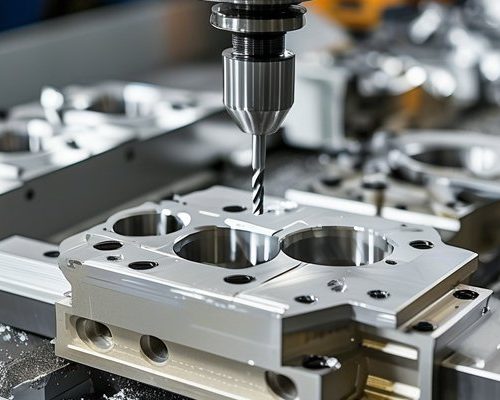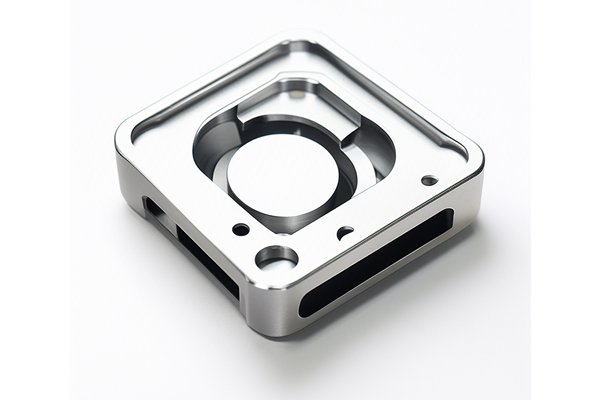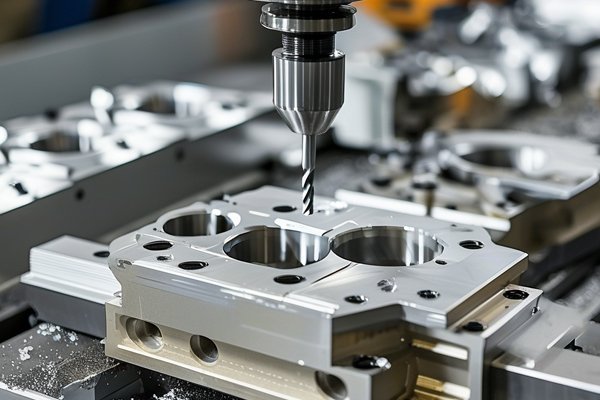When we think of metals in machining, we often find ourselves wandering through a maze of choices, each with its own unique properties and characteristics. Amidst this maze, brass stands out like a shimmering beacon, enticing machinists and manufacturers alike. So, what is it about brass that makes it such a popular choice in the machining world? In this comprehensive guide, we’ll dive deep into the world of brass machining, exploring its benefits, techniques, and applications. By the end of our journey, you’ll not only understand the ins and outs of machining brass but also why it should be at the top of your list for your next project!
What is Brass?
To start, let’s break down what brass actually is. Brass is not just a single metal; it’s an alloy predominantly made up of copper and zinc. Imagine a beautiful dance between these two metals, each bringing its own flair and characteristics to the party. Copper contributes excellent conductivity and corrosion resistance, while zinc adds durability and strength, making this combination ideal for various applications, especially in machining.
As we embark on our exploration of brass, picture brass as a chameleon in the world of metals – it adapts and shines in a variety of contexts, whether in the form of musical instruments, plumbing fixtures, or intricate machine parts.
The Alluring Benefits of Brass Machining
First off, let’s talk about one of the most enticing features of brass: its corrosion resistance. If you’ve ever tried to maintain a metal object outside, you know how frustrating rust can be. Brass, however, holds its own against the elements. Think of it as the superhero of metals, donning a powerful shield against moisture, making it ideal for outdoor applications and environments prone to humidity.
Do you know why machinists often choose brass over other metals? It’s all in the workability! Brass is incredibly easy to machine. Picture it like sculpting with soft clay; it can be shaped and formed with relative ease. This means better efficiency and lower production costs, allowing you to complete your projects faster while maintaining high precision and less wear on cutting tools.
Brass is also notable for its ductility and malleability. Imagine being able to stretch and shape something without breaking it—that’s brass for you! This quality enables it to be formed into intricate designs and shapes, making it a favorite among artisans and manufacturers who require detailed and complex components.
Let’s not overlook brass’s visual attractiveness. With its distinctive yellow-gold hue, brass adds a touch of elegance wherever it’s used. Whether it’s musical instruments that produce beautiful melodies or decorative items that catch the eye, the aesthetic appeal of brass is undeniable. It’s like wearing a designer outfit that’s as functional as it is beautiful!
If you’ve dabbled in electronics or plumbing, you’re probably aware that thermal conductivity is essential for efficient heat transfer. Brass excels in this area, allowing it to be used in applications such as radiator fittings and electrical connectors. Picture brass as a smooth highway for heat, allowing it to travel efficiently without any roadblocks.
Last but not least, let’s talk about versatility. Brass finds applications in a myriad of industries—from automotive to aerospace, electronics to plumbing, and beyond. It’s comforting to know that no matter where you venture in the realm of manufacturing, brass is likely to have a part to play, akin to the trusty Swiss army knife of metals!
Understanding Brass Machining Techniques
Now that we’ve established the many benefits of brass, let’s dive into the actual machining techniques that make all this possible. Whether you’re a seasoned machinist or a curious newbie, knowing how to effectively work with brass is crucial.
Turning is a fundamental machining process that utilizes a lathe to rotate the workpiece while a cutting tool removes material. It’s like watching a potter on the wheel, shaping clay into elegant pottery. With brass, turning allows for creating cylindrical parts with remarkable precision.
Choosing the Right Tool
When it comes to turning brass, the choice of tools is essential. Carbide tools are commonly recommended due to their durability and ability to maintain sharpness even under considerable stress. Imagine trying to cut through butter with a dull knife—it just doesn’t work! Opt for sharp, high-quality tools to achieve the best results.
Next up, we have milling. In this process, a rotating cutting tool removes material from the workpiece, rather like slicing a loaf of bread. Milling brass can result in complex shapes and features, including pockets and contours, enabling you to create precision components that meet high tolerances.
Understanding Feed Rates
When milling brass, understanding feed rates is paramount. Too fast, and you risk tearing the material; too slow, and you waste time and resources. It’s a delicate dance, akin to finding the right rhythm in a song—too fast, and it’s chaotic; too slow, and it lacks energy.
Drilling is another staple technique in brass machining, and it’s as straightforward as it sounds. When you need precise holes in a brass component, drilling is your go-to method. Think of it as creating windows in your metal structure—these holes can facilitate screws or bolts, making everything fit together snugly.
Drill Bit Selection
Selecting the right drill bit for brass is also crucial. Cobalt-coated drill bits are recommended for their hardness and durability. You wouldn’t use a flimsy spoon to dig a hole in the ground, right? Similarly, having the right tools makes all the difference!
Boring is an advanced machining process often used to enlarge existing holes or create more precise dimensions. It can be likened to fine-tuning; if the initial hole didn’t meet your specifications, boring allows for those perfect adjustments.

Last but not least is tapping, a process of creating internal threads in a hole. It’s like weaving a tapestry; you’re adding structure and detail to your brass workpiece. Tapping allows you to screw in bolts or fasteners securely, adding that finishing touch to your project.
Selecting the Right Brass for Machining
Not all brass is created equal! There are various types out there, each tailored for specific applications and machining processes. Let’s break down a few popular options:
If you want brass that’s a dream to machine, free-cutting brass is your best friend. This alloy is specifically designed for excellent machinability. It’s like the golden child of metal alloys, making it perfect for precision components where time and efficiency matter.
When you require more corrosion resistance, naval brass comes into play. This alloy is resistant to saltwater and is often used in marine applications. Think of it as the maritime guardian of brass, able to withstand the elements while still looking fabulous.
Cartridge brass strikes a balance between workability and strength. It’s used in everything from ammunition casings to musical instruments. If you ever wondered why brass instruments produce such captivating sounds, the answer is partly due to the quality of cartridge brass!
Real-world Applications of Brass Machining
Brass machining plays a vital role in a multitude of applications. Let’s shine a spotlight on a few key industries where brass truly shines:
In the automotive industry, brass is commonly used for components such as fittings, connectors, and decorative trim. Think about the attention to detail that goes into crafting a car—brass components contribute not only to functionality but also to aesthetic appeal.
In aerospace, reliability is paramount. Brass components, given their corrosion resistance and strength, are often used in various fittings and connectors, ensuring that everything remains intact during flight.
Ever turned on a faucet and noticed how fluidly the water flows? Brass is present almost everywhere in plumbing fixtures due to its resistant qualities. It’s like the invisible hand that keeps your water supply running smoothly!
Brass is also prevalent in the electronics sector, where connectors and terminals require high conductivity and durability. Picture the intricate connections that allow your devices to function seamlessly; brass is often a fundamental part of that puzzle.
Tips for Successful Brass Machining
As you navigate the world of brass machining, consider these handy tips to ensure your work is successful and efficient:
Finding the right spindle speeds and feed rates can greatly enhance your machining process. Conduct tests to determine the best settings for your specific brass alloy. It’s like tuning an instrument—once you find the right pitch, the music flows beautifully.
Machining brass produces heat, so using high-quality lubricants can help minimize wear on your tools and enhance the overall finish. Picture it as adding oil to a squeaky hinge; a little lubrication goes a long way!
Keeping your workspace clean and organized is crucial. It helps prevent accidents and ensures that you can find the tools you need when you need them—nothing’s more annoying than searching for that elusive wrench when you’re knee-deep in a project!
Safety should always be your top priority. Wear appropriate protective gear and ensure your machinery is maintained regularly. After all, it’s better to be safe than sorry!
Conclusion: The Golden Legacy of Brass Machining
As we wrap up this exploration of brass machining, it’s clear that brass is more than just a shining metal; it’s a versatile, durable, and aesthetically appealing choice for a myriad of applications. Whether you’re looking to craft intricate parts in the automotive industry or reliable components in aerospace, brass holds a special place in the machining world.
With its striking balance of workability and strength, brass is a material that not only serves practical purposes but also adds beauty and sophistication wherever it’s used. As we continue to innovate and explore the boundaries of machining, the legacy of brass will undoubtedly shine bright.
So, next time you’re faced with a choice of materials for your machining project, remember the golden allure of brass, and let it guide you to stunning outcomes. Happy machining!



